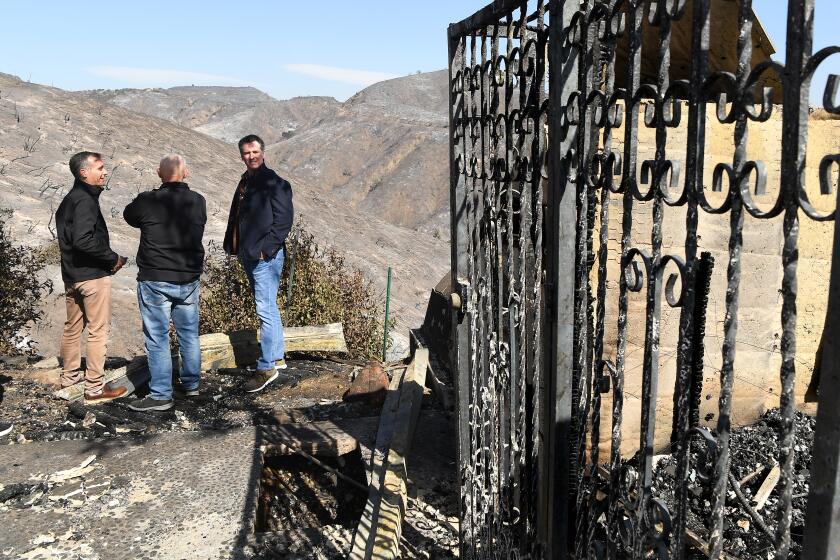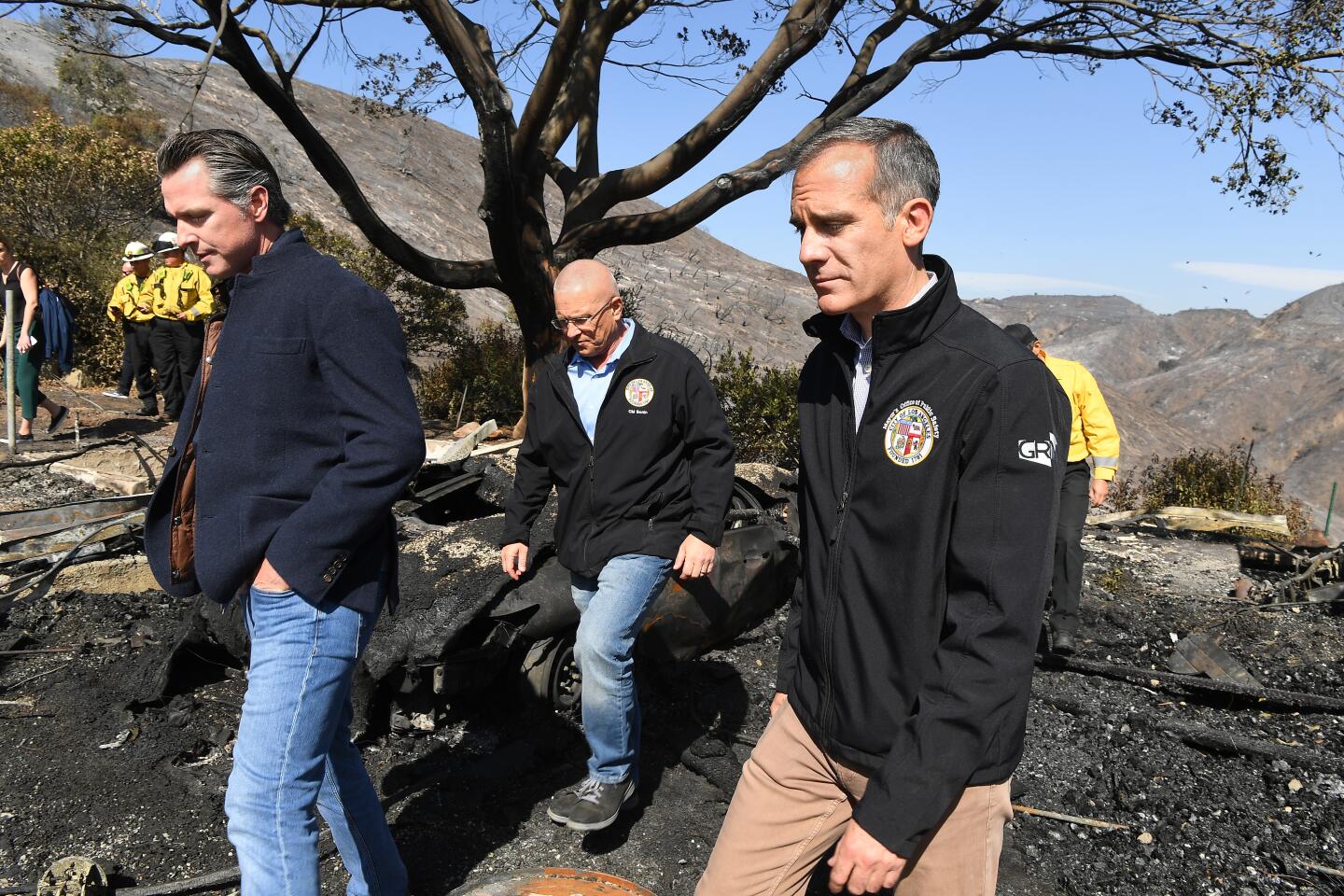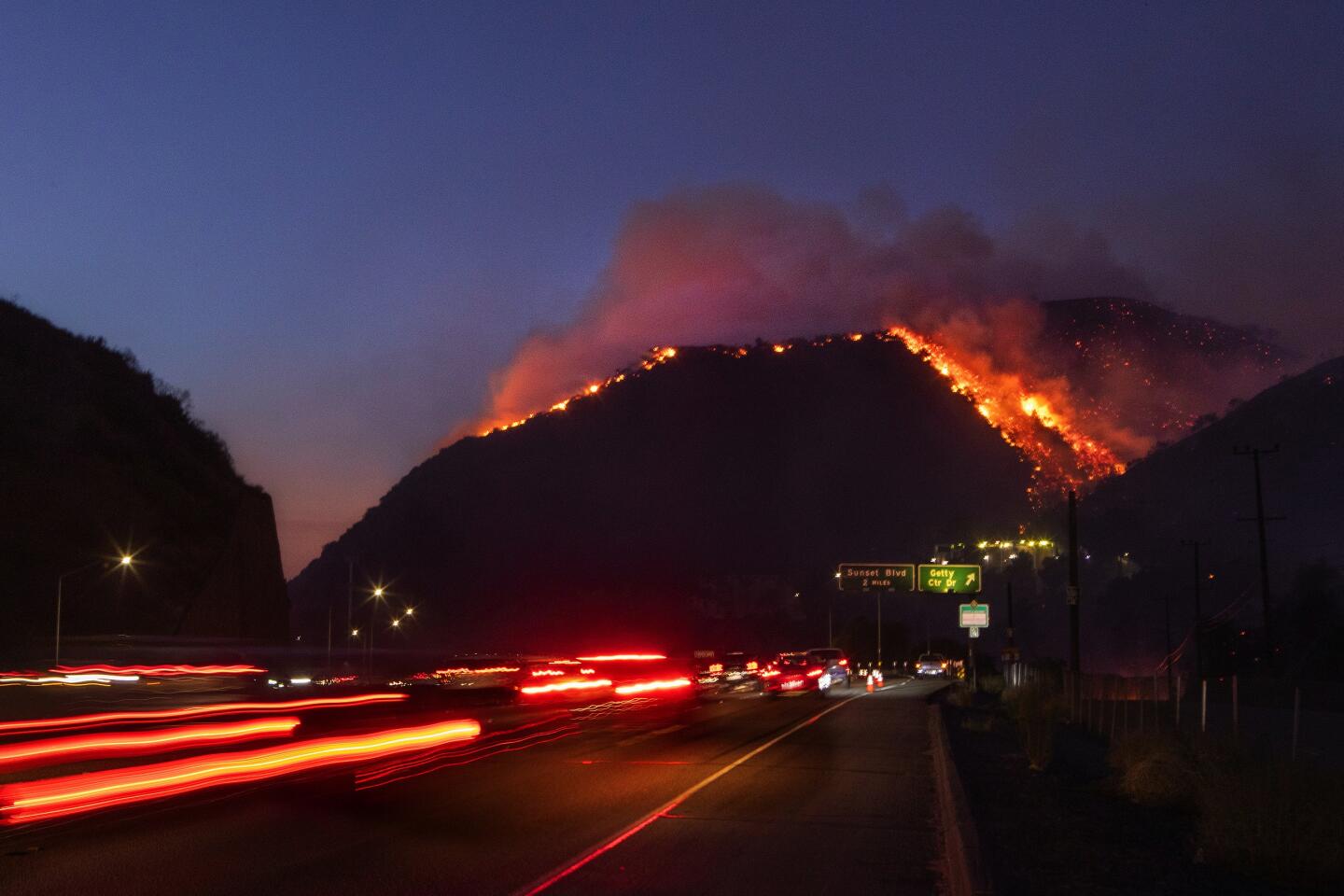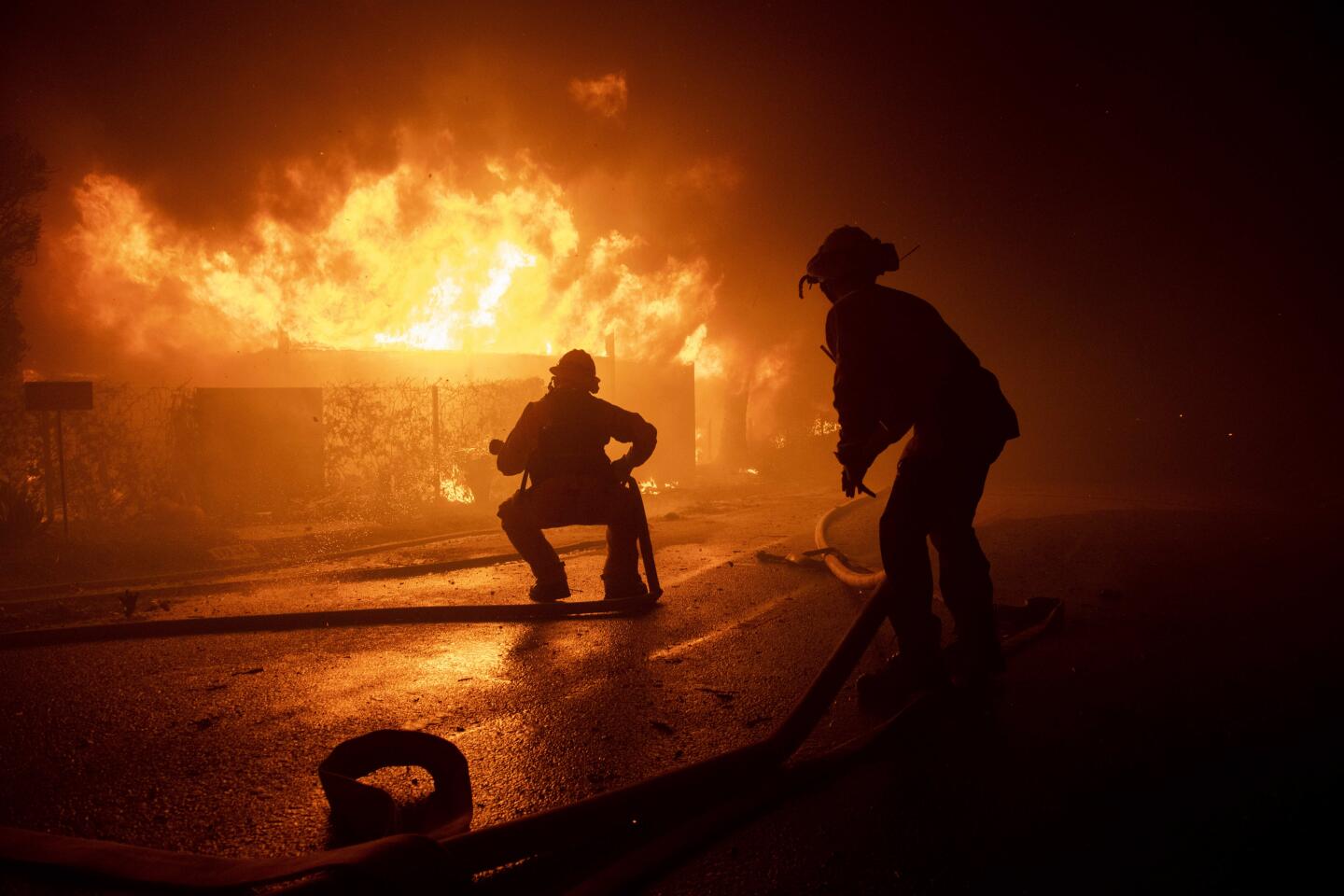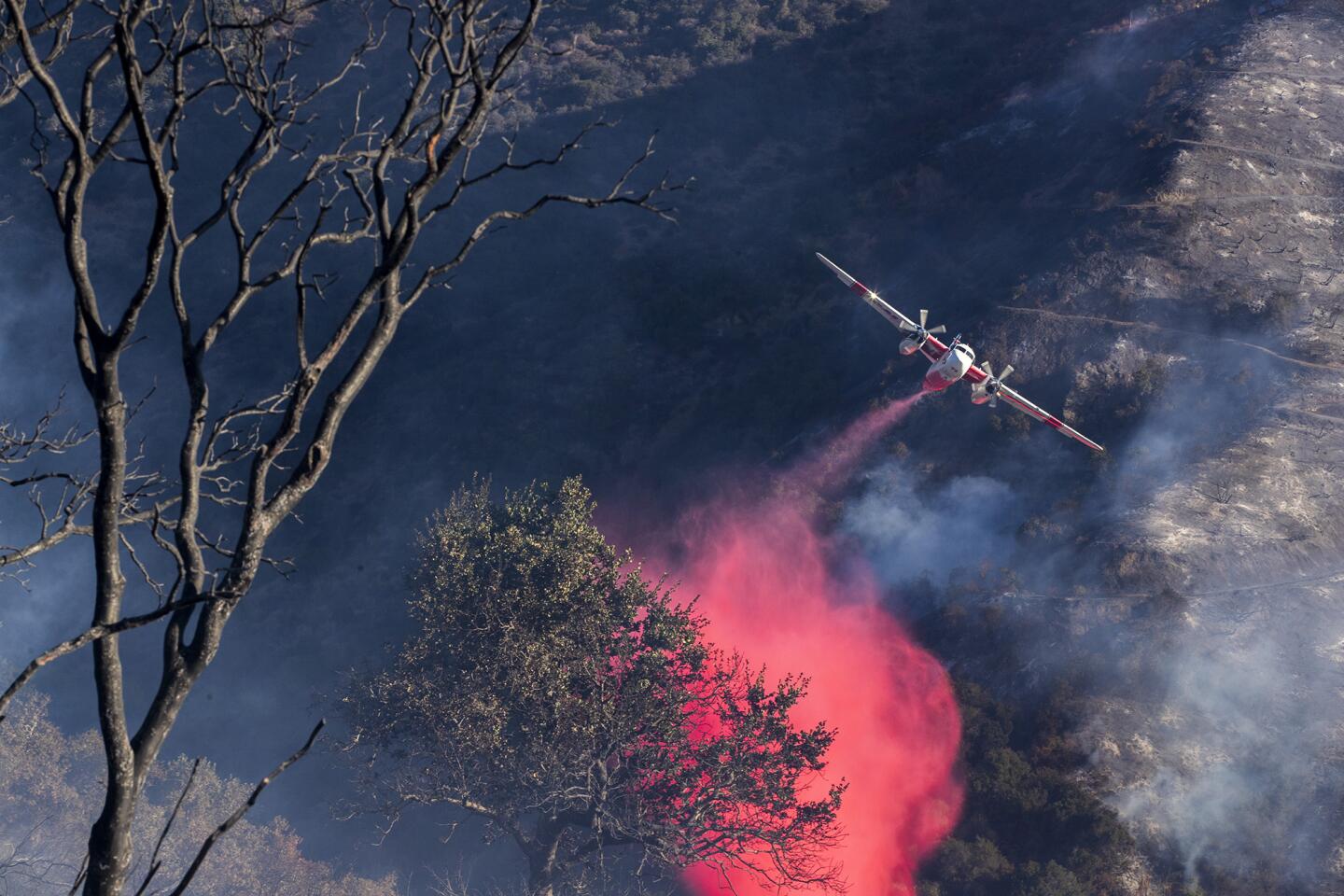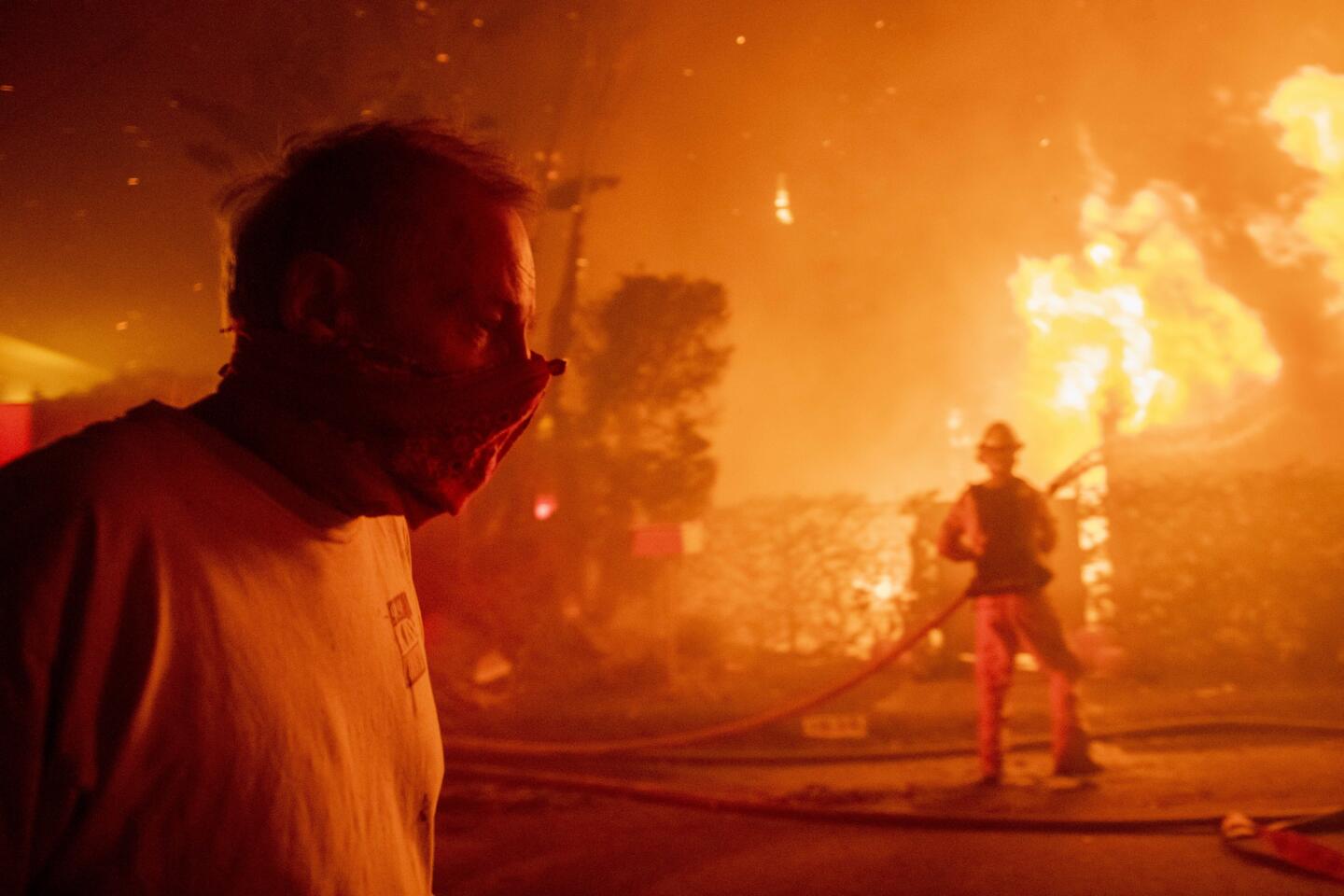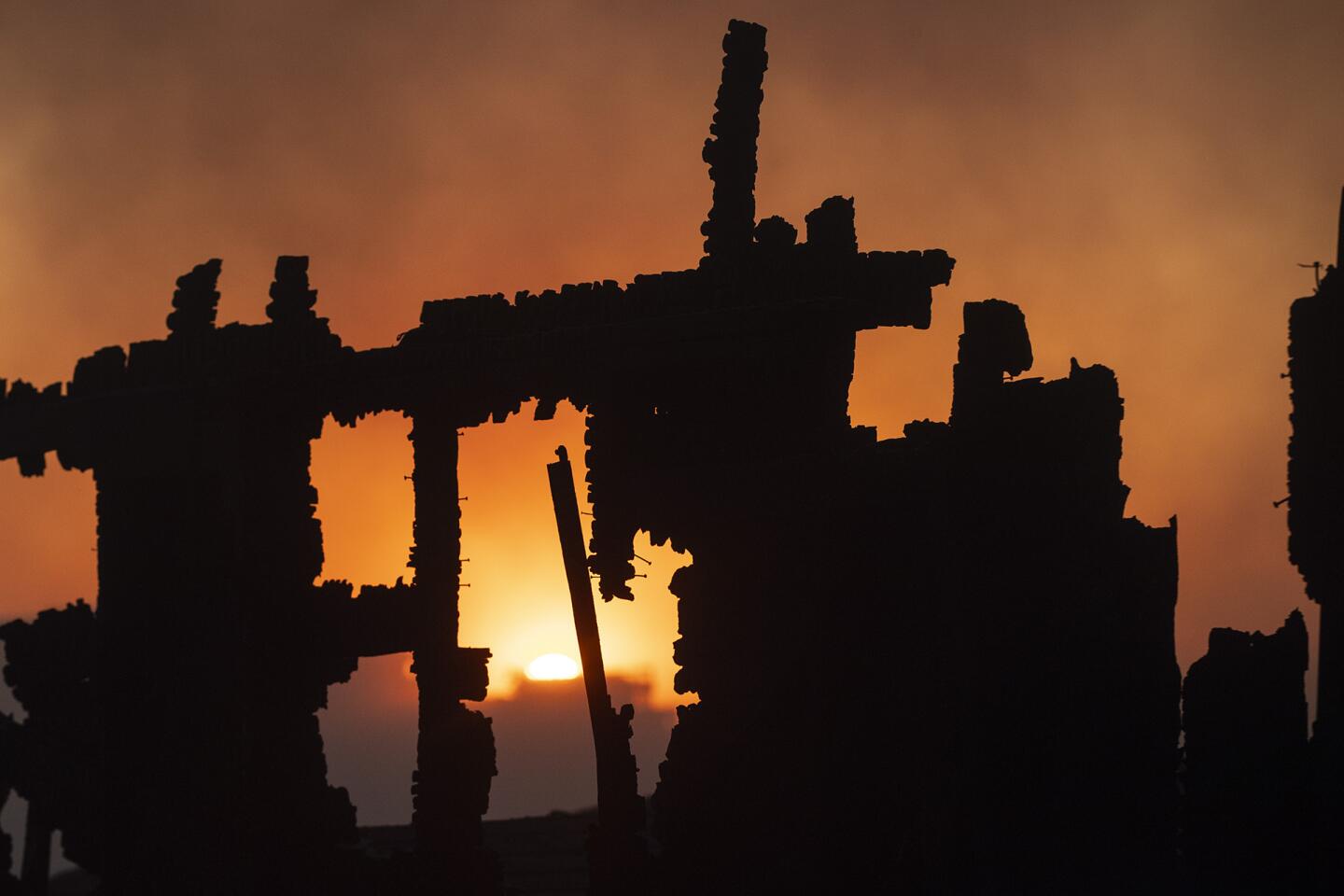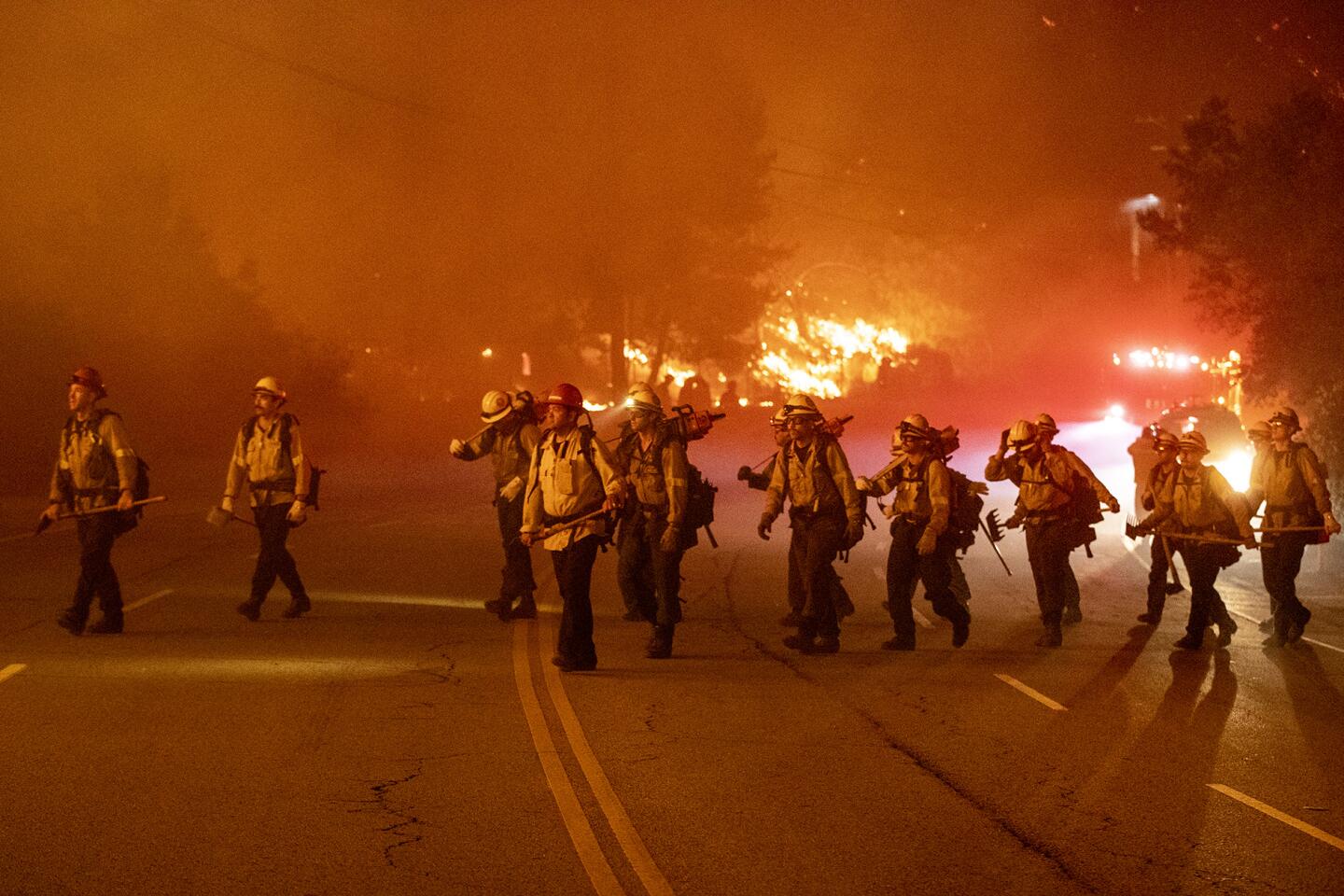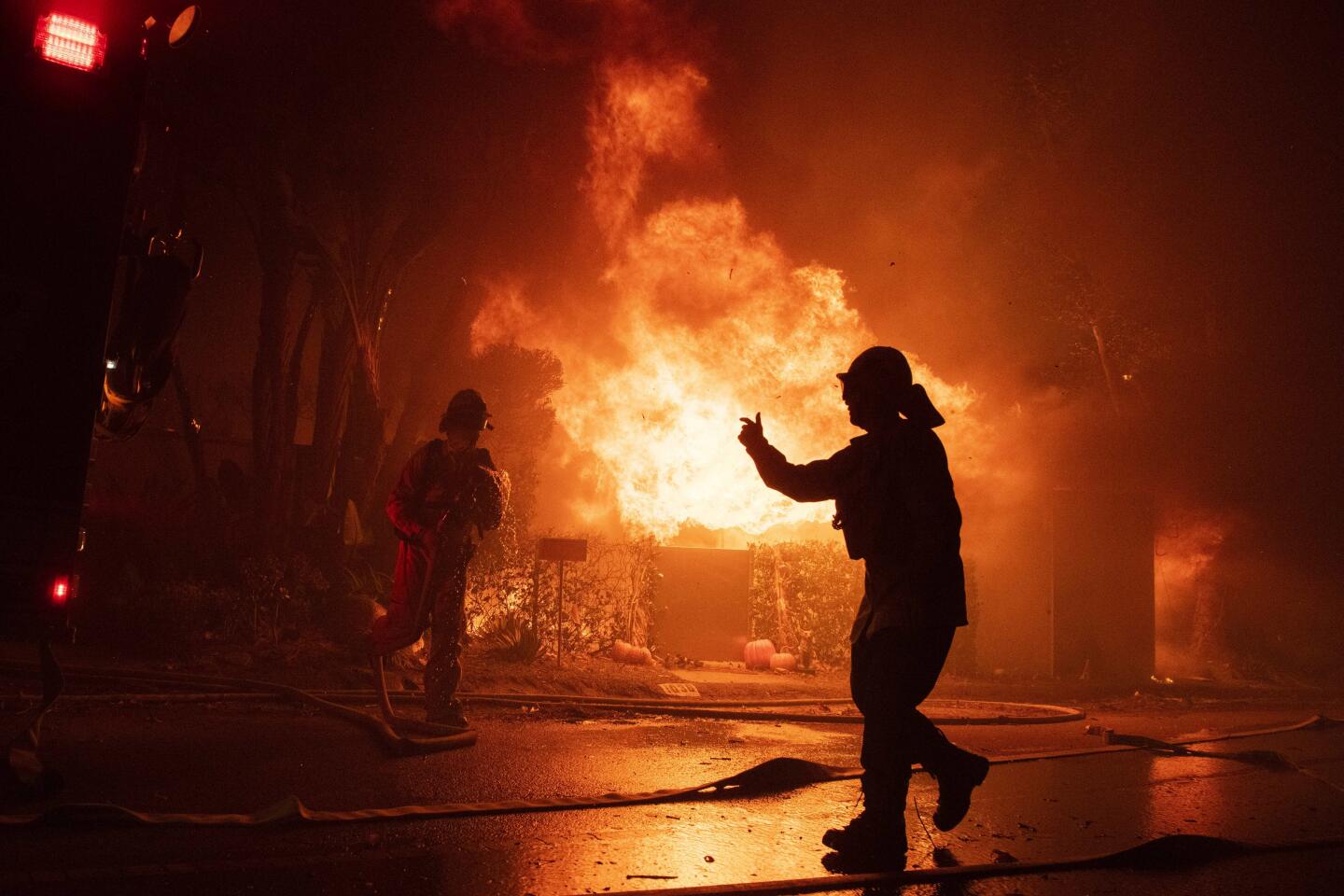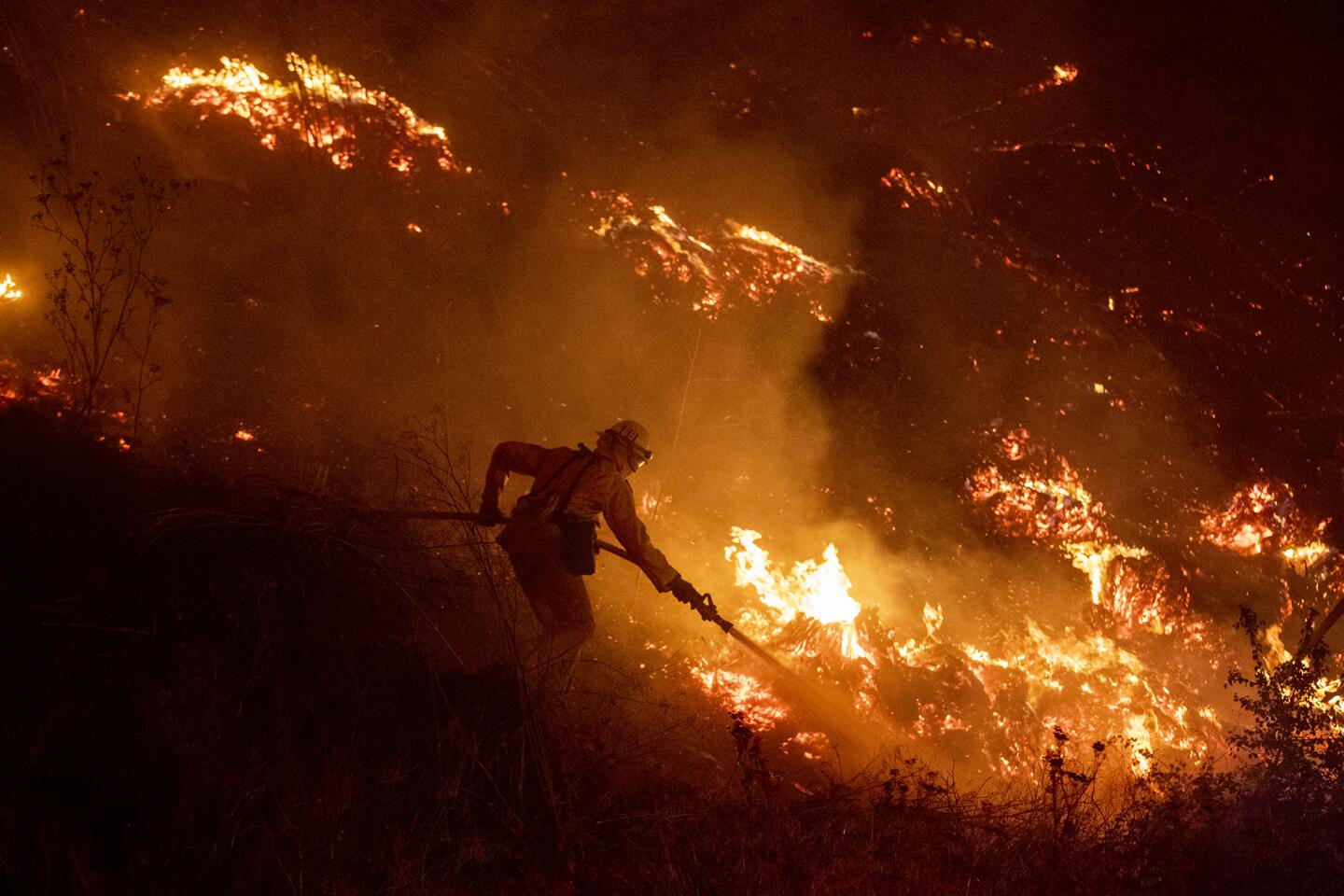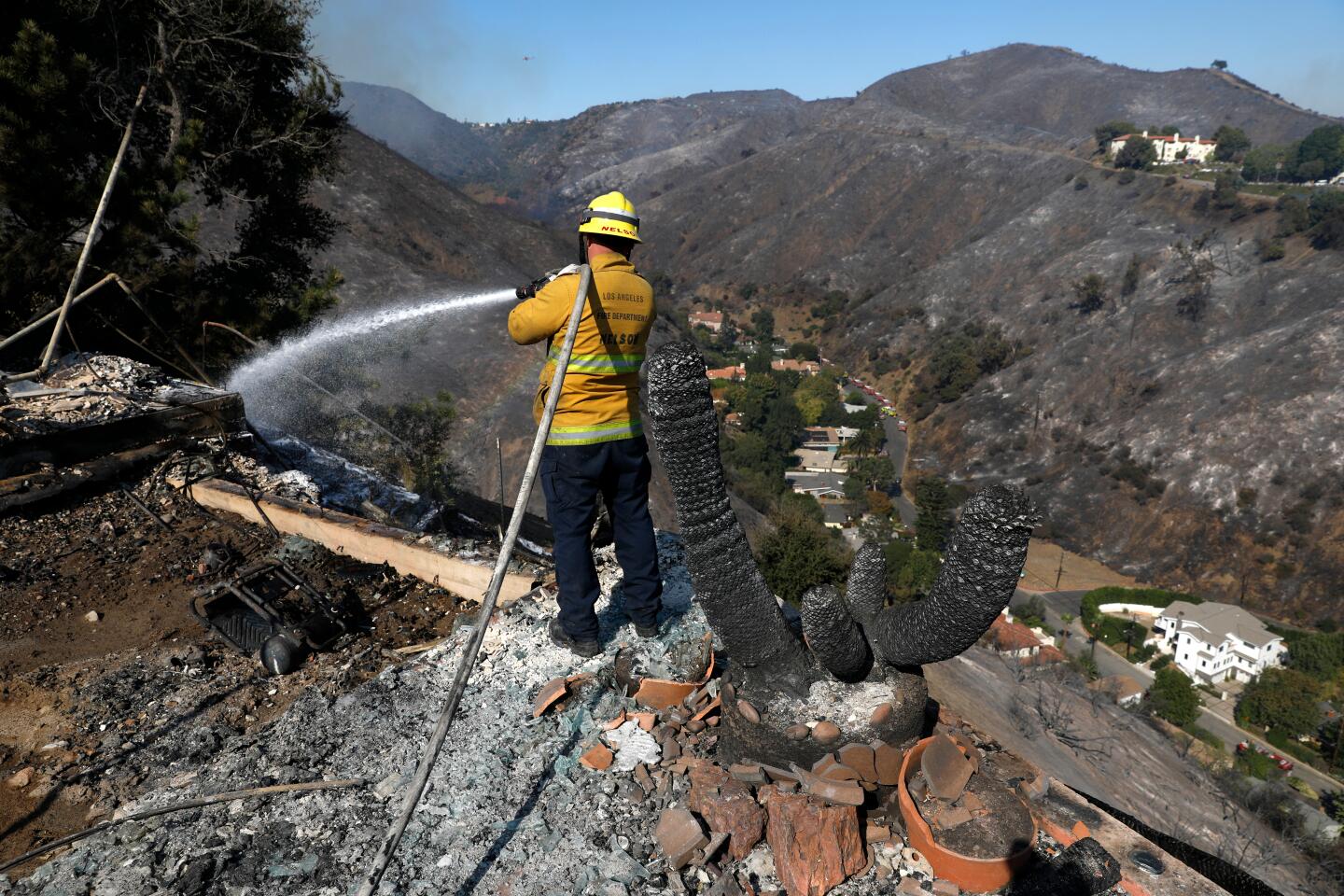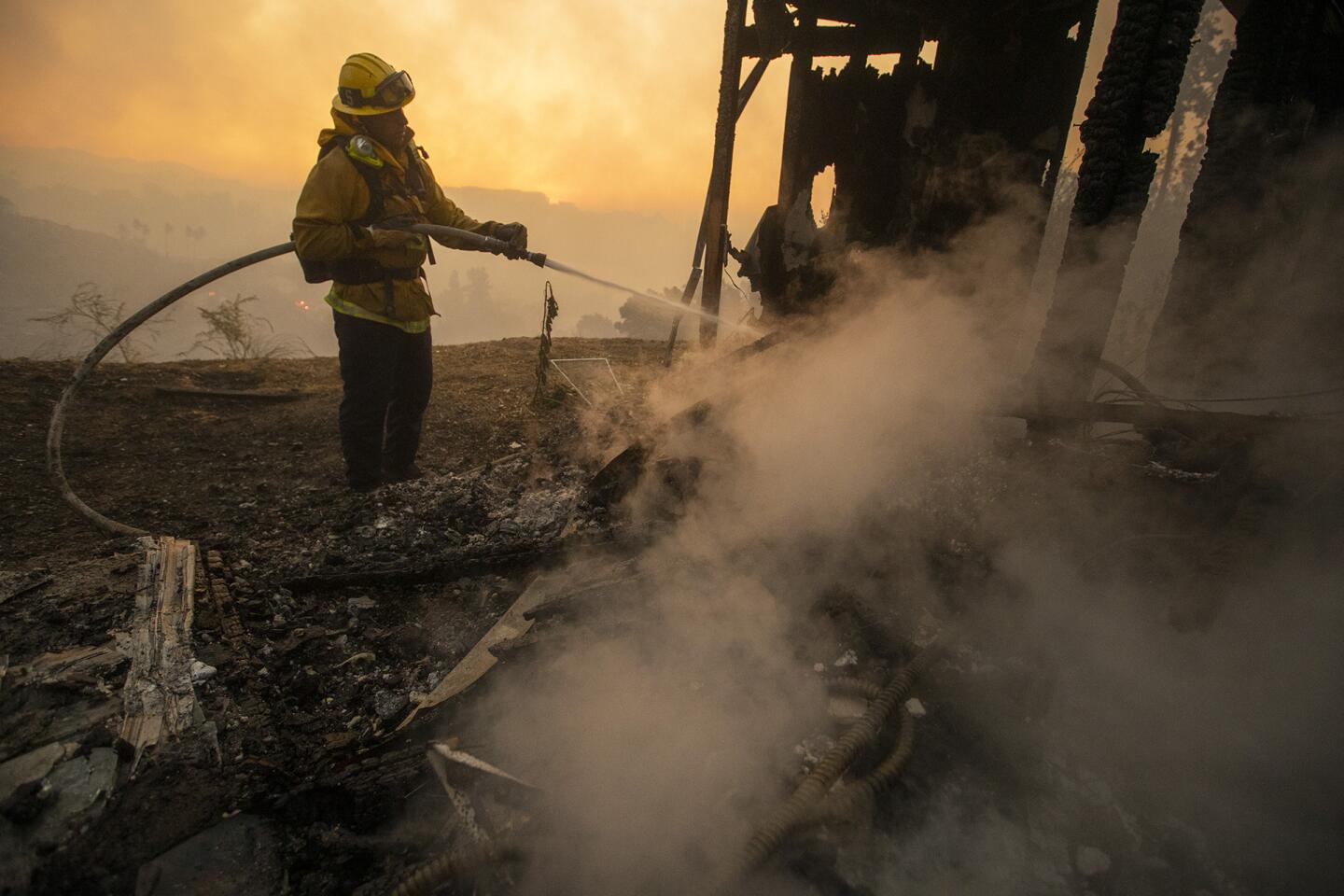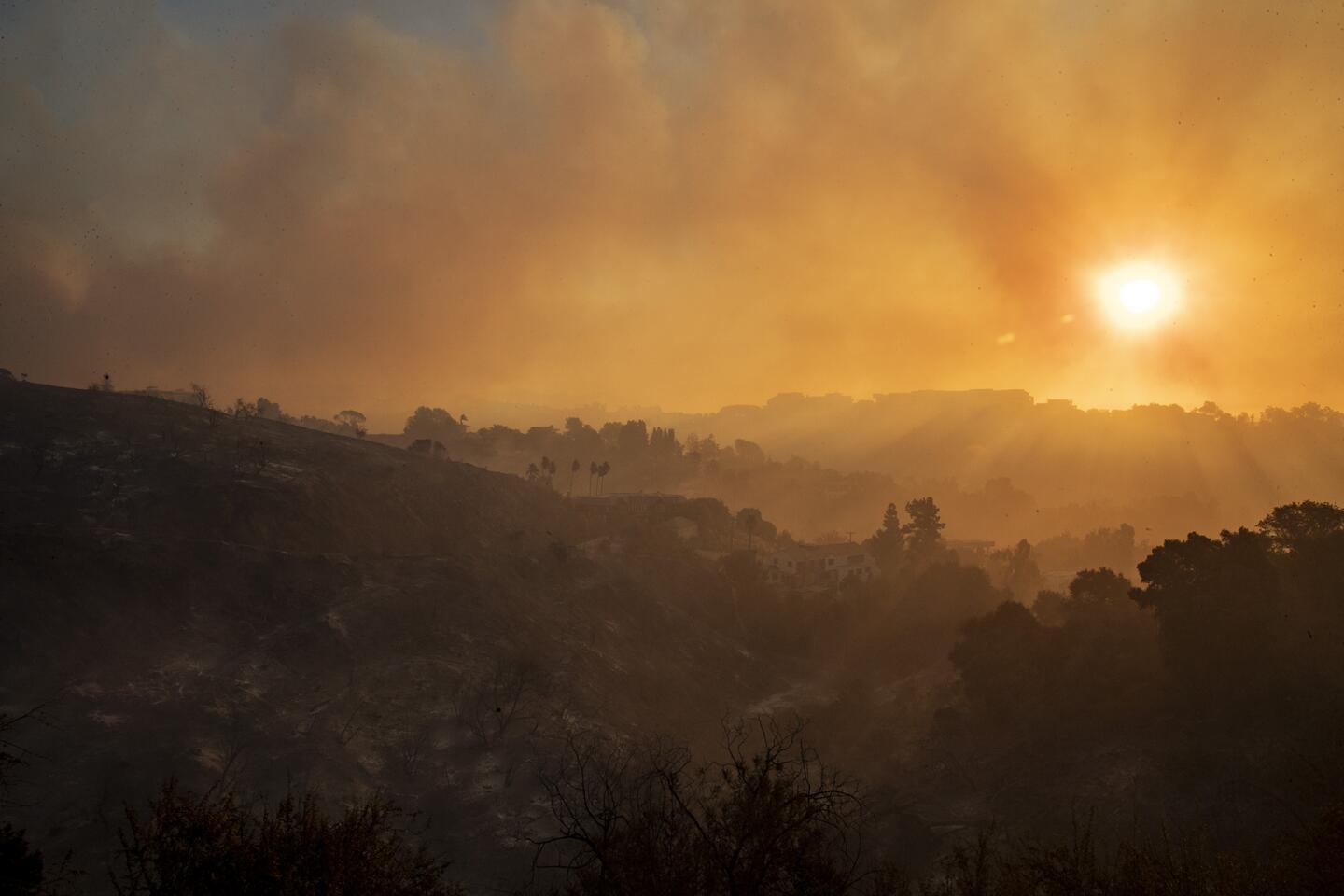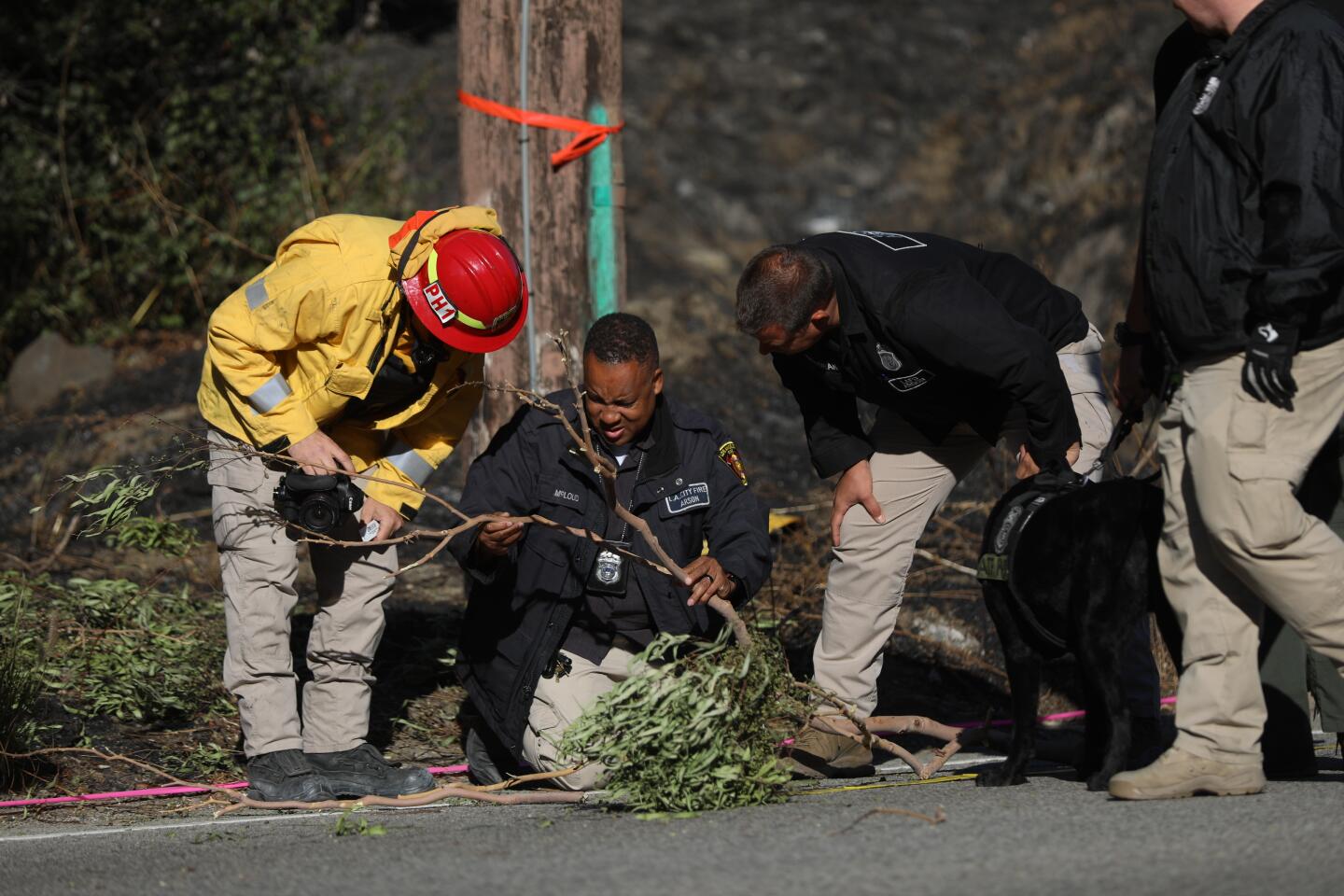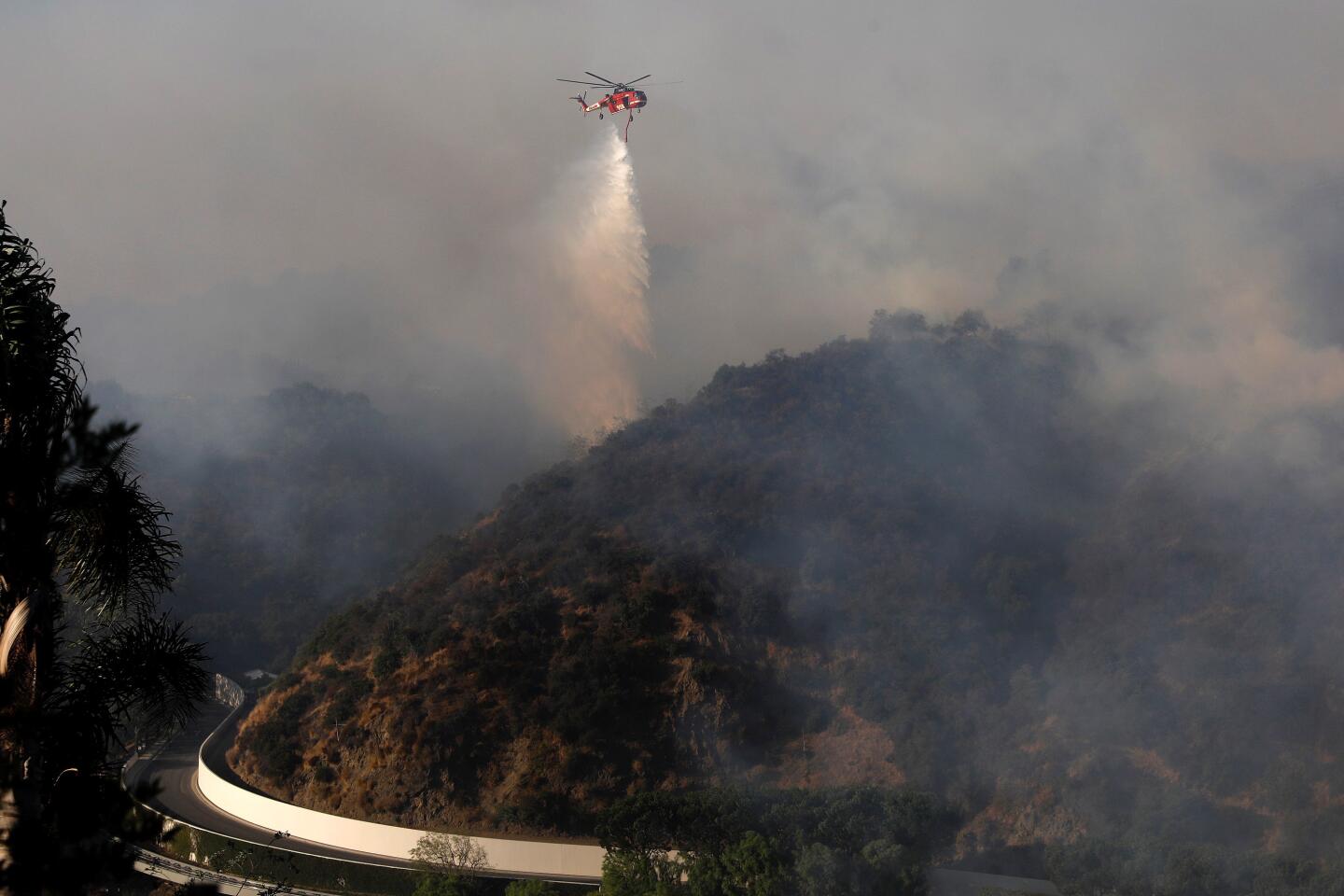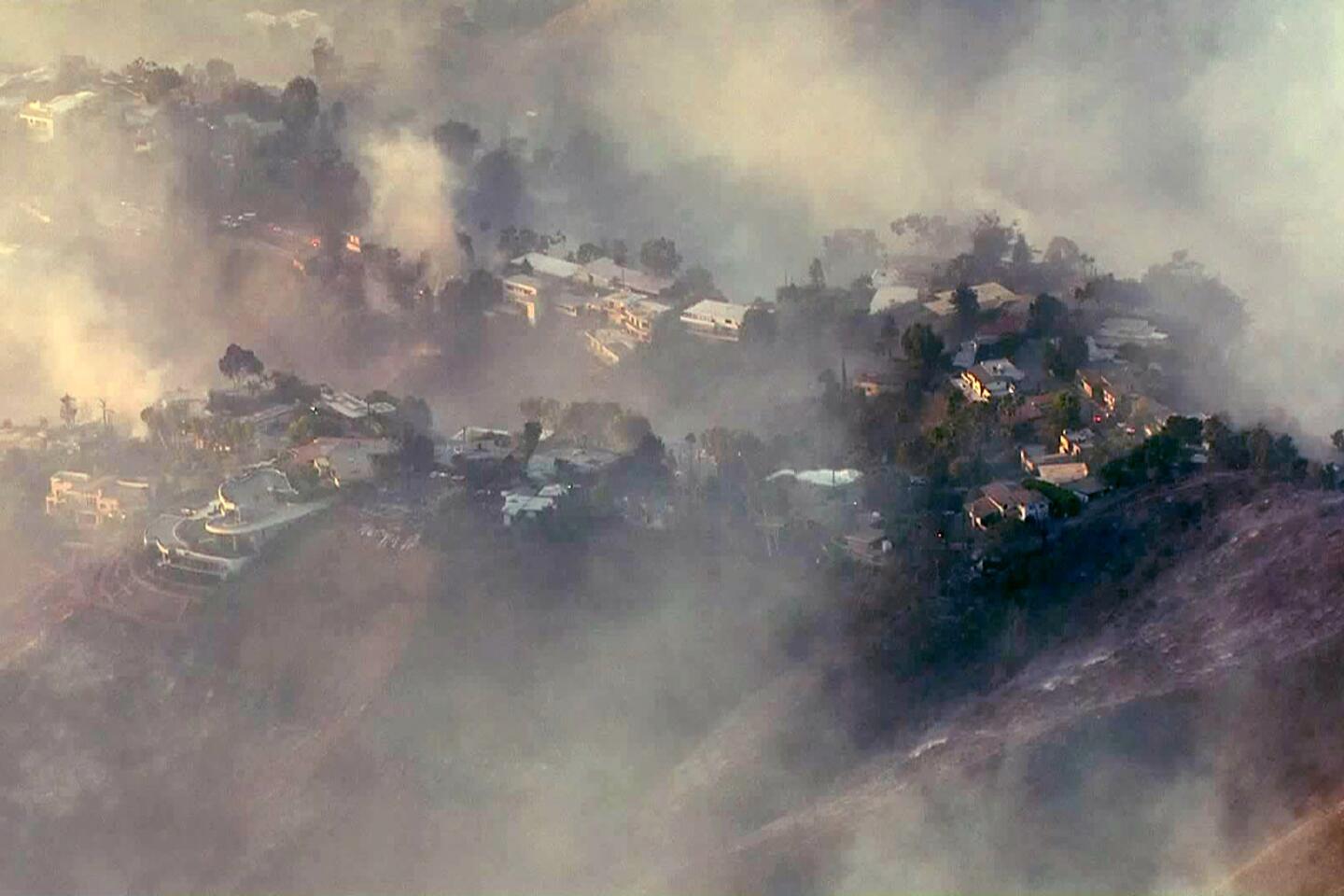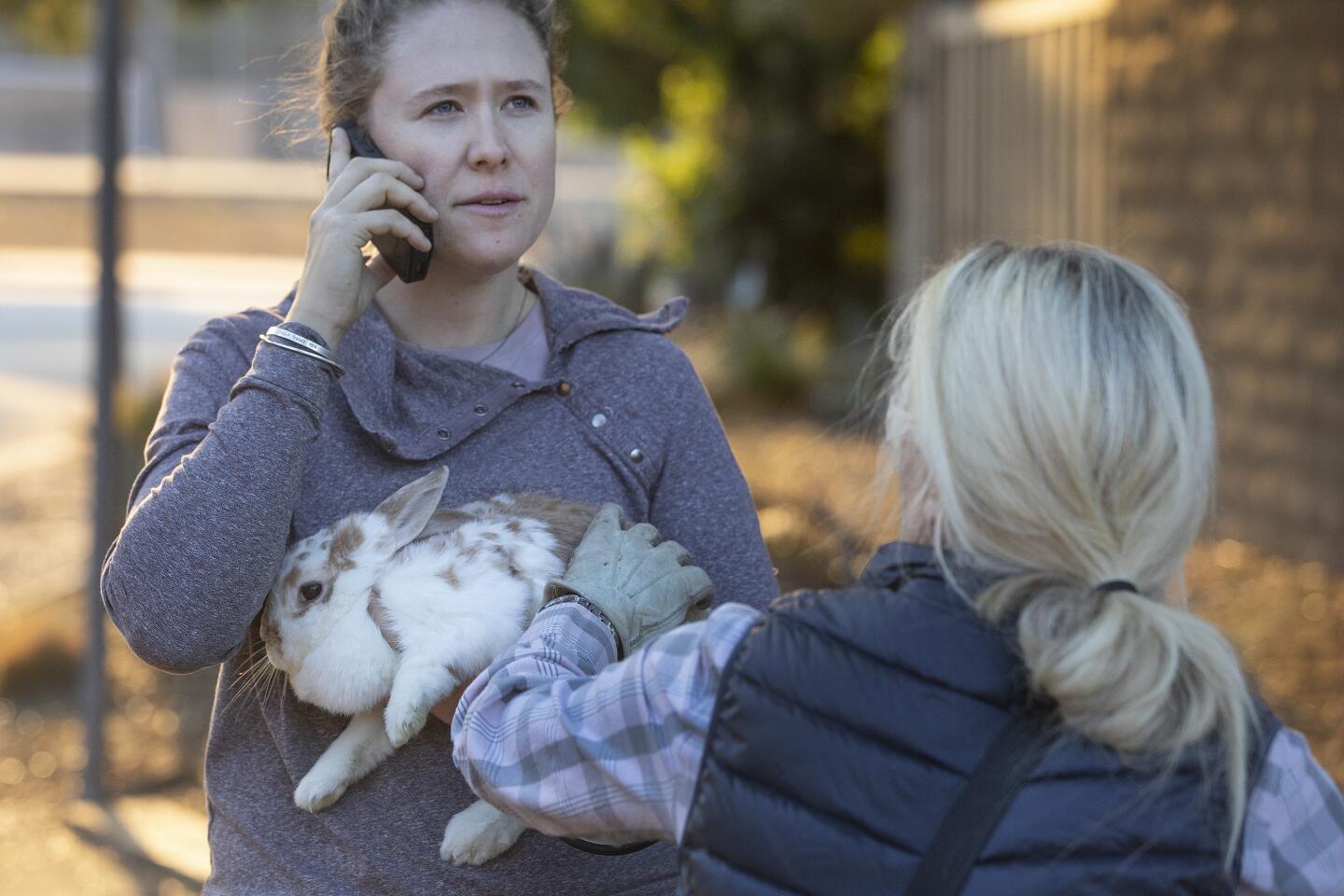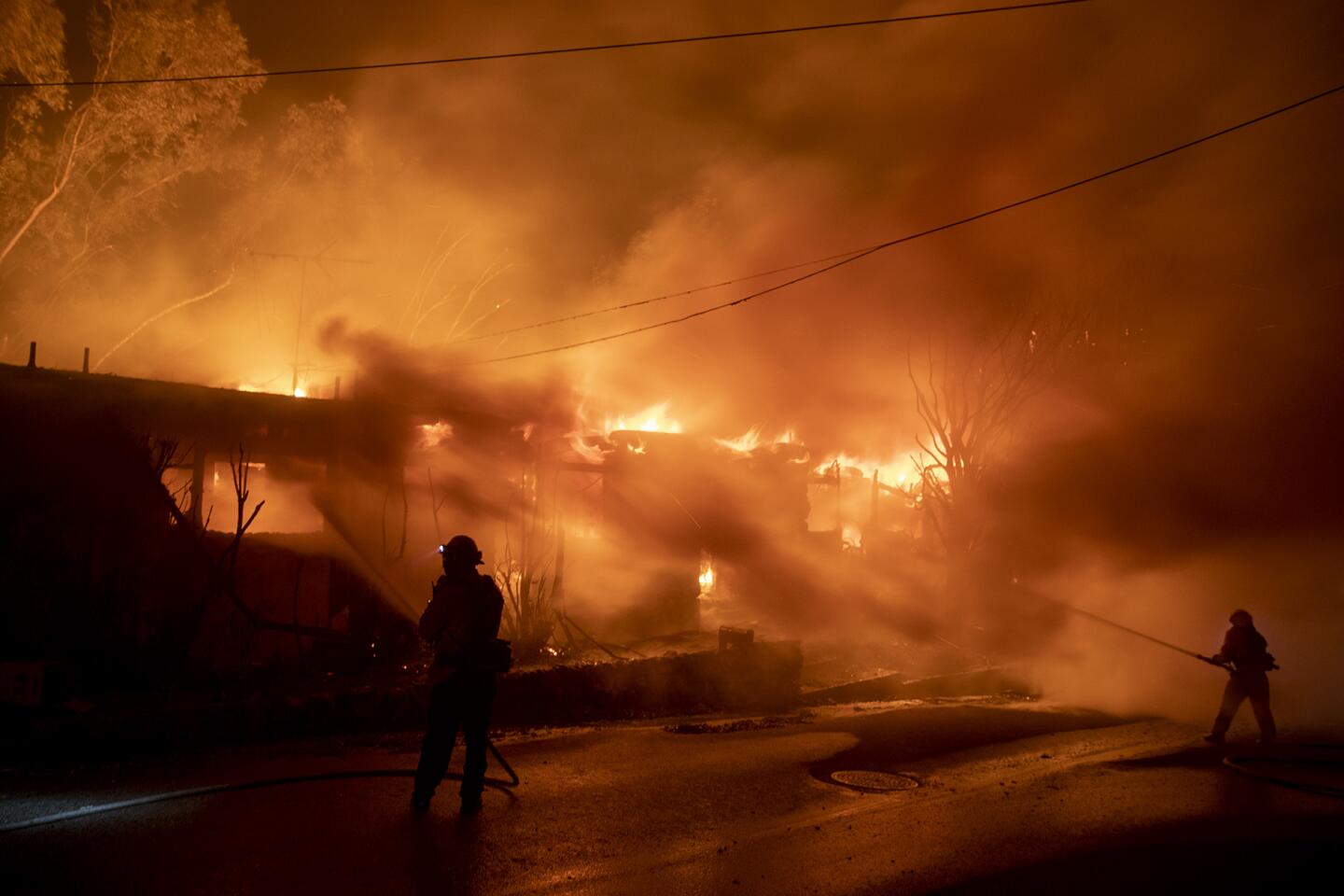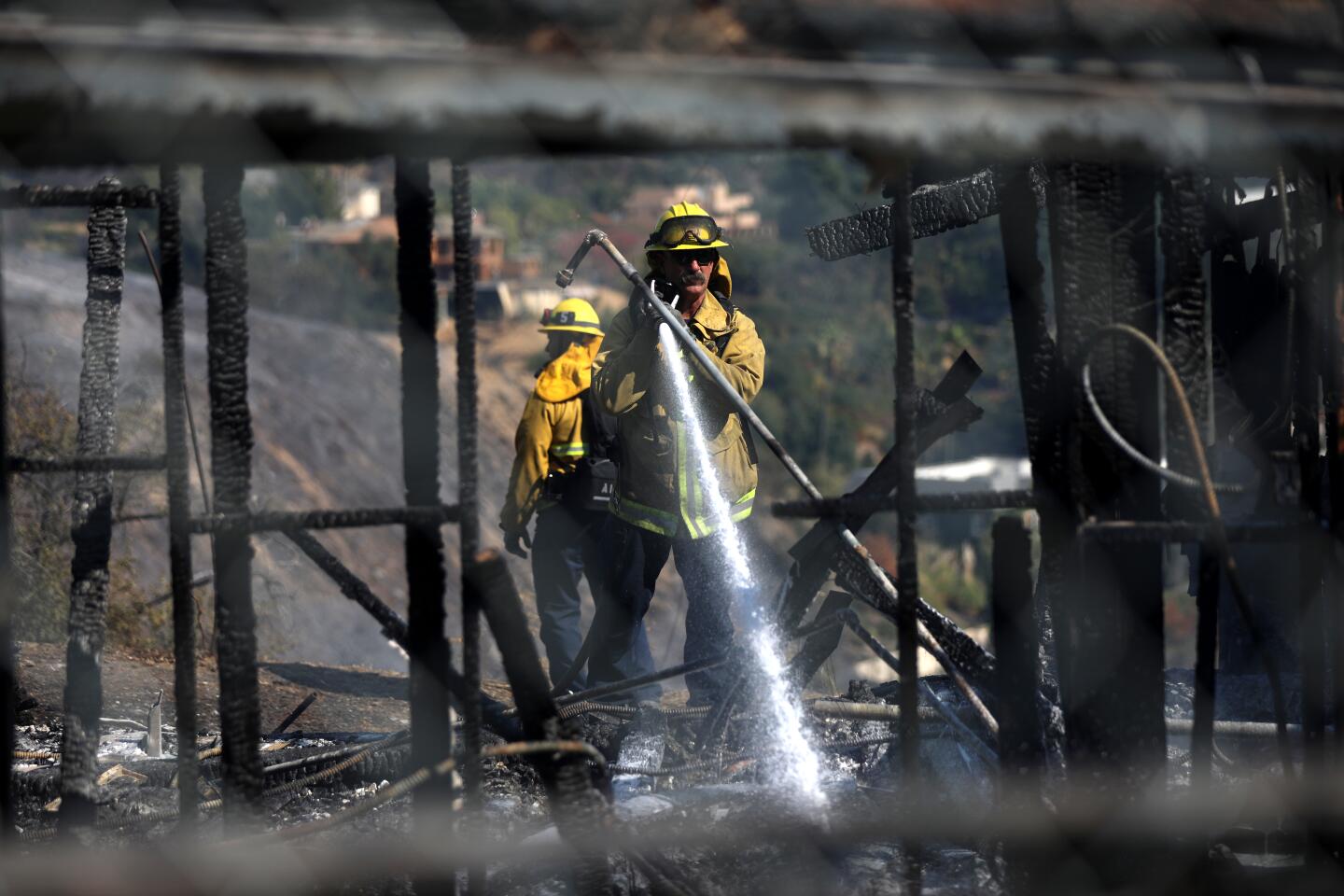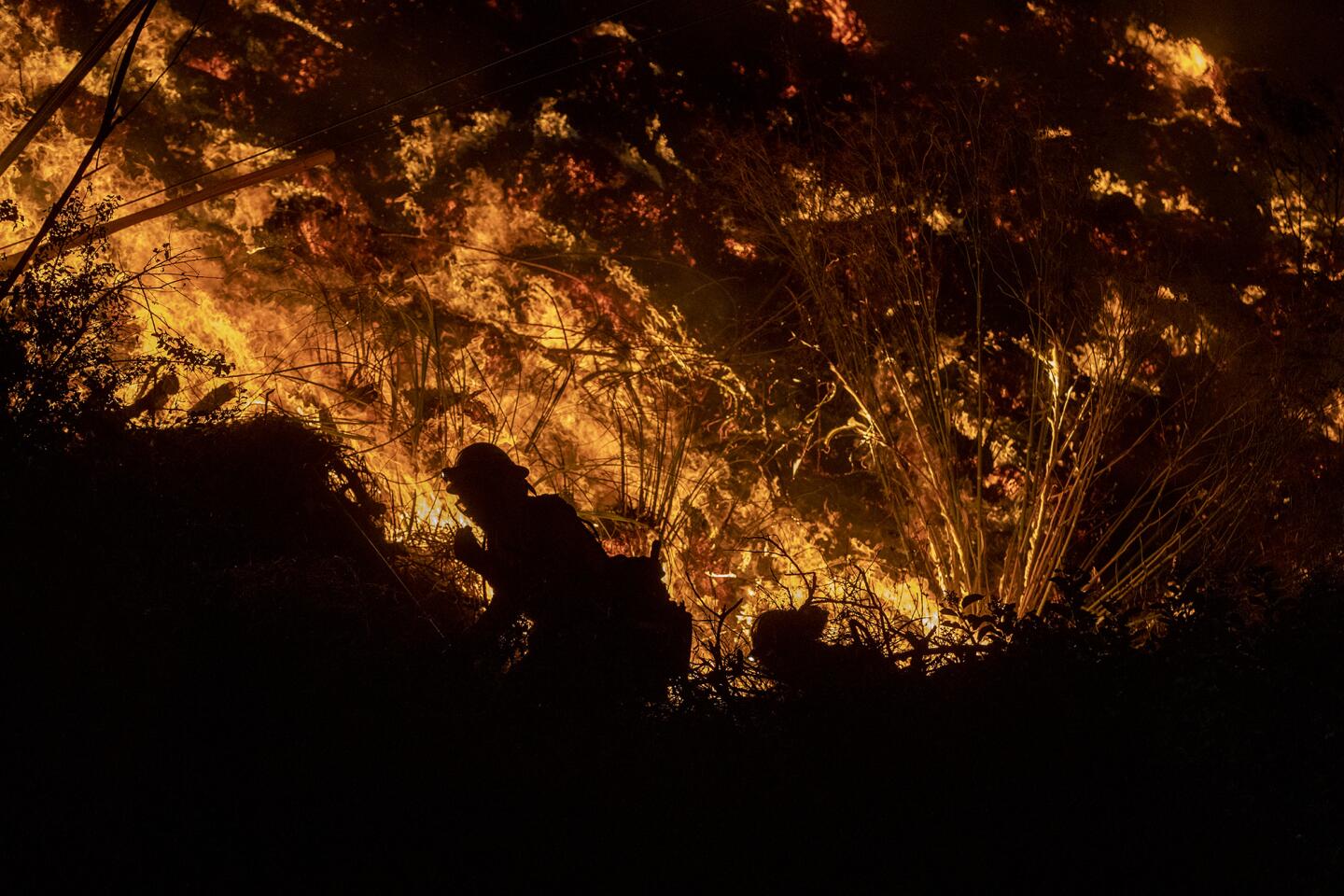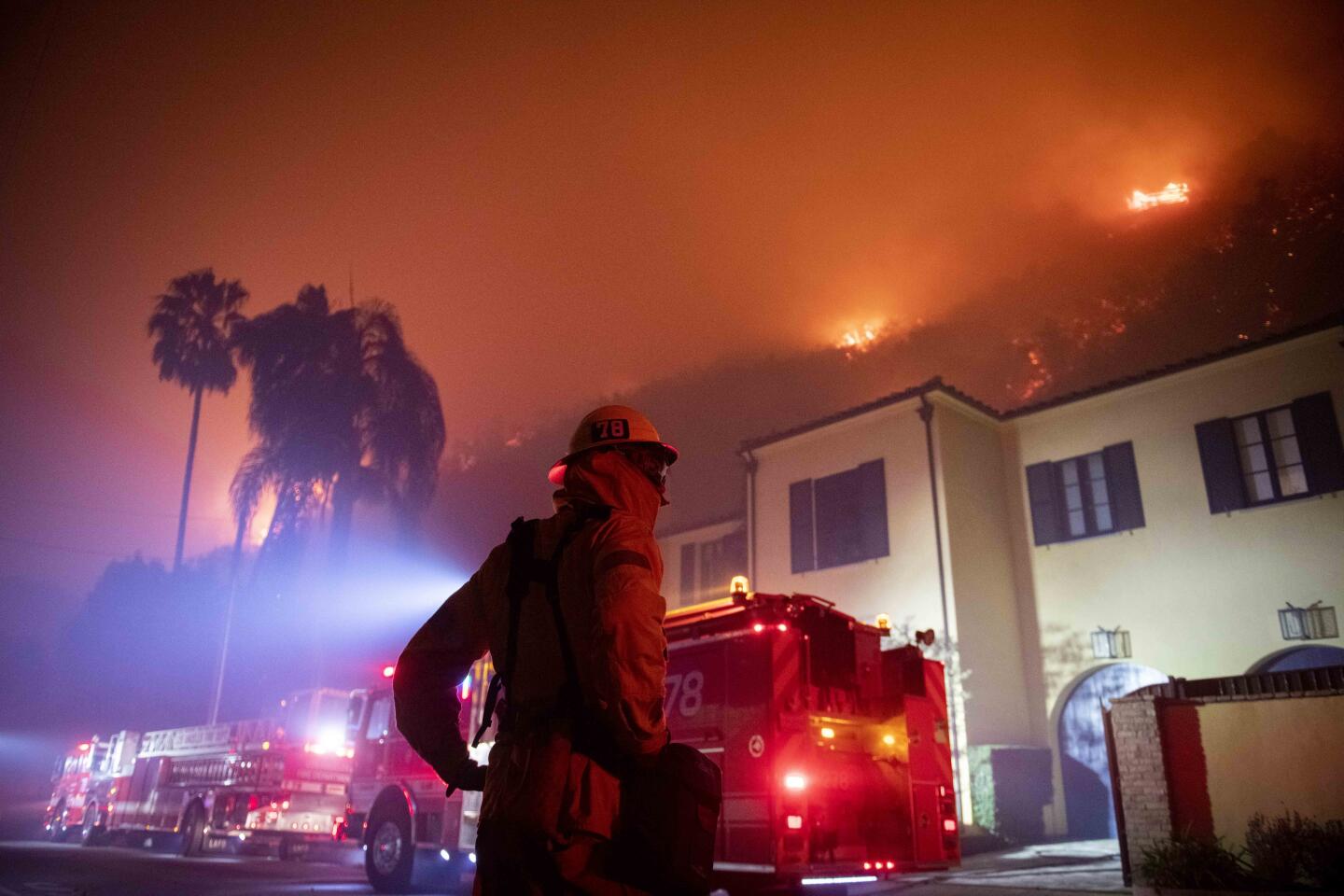DWP power lines hit by tree branch sparked Getty fire that destroyed homes

- Share via
The Getty fire that sent thousands of Westside residents fleeing was started by a tree branch that fell on power lines, Los Angeles Mayor Eric Garcetti said Tuesday evening.
Video footage shows the branch breaking off a eucalyptus tree and sparking the fire in the 1900 block of North Sepulveda Boulevard, Garcetti said.
A brush fire that broke out near the Getty Center has burned several homes and was threatening thousands more in Brentwood and other Westside hillside communities.
The power lines are operated by the Los Angeles Department of Water and Power, according to a fire official. The agency said it was cooperating with the investigation.
DWP general manager Marty Adams, who appeared alongside Garcetti at a Tuesday news event, said the utility had cleared brush along the Sepulveda Pass in July. The DWP also said in a statement that there was “no failure of electrical equipment.”
Garcetti said the branch came from outside of the clearance area and the incident “was an act of God.”
The fire was 15% contained as of Tuesday afternoon.
Firefighters are bracing for worsening wind conditions that could hamper their efforts to tamp down the Getty fire. The National Weather Service issued a rare “extreme red flag warning” for Southern California through Thursday evening, saying winds could top 80 mph.
The Getty fire broke out shortly after 1:30 a.m. Monday along the 405 Freeway near the Getty Center and spread to the south and west, rapidly burning more than 600 acres and halting traffic on the 405 Freeway.
About 600 DWP customers in the Getty fire area remained without power on Tuesday.
At about 3:19 a.m. Monday, the utility took three circuits out of service, resulting in 2,600 customers losing power in Bel-Air, Brentwood and Westwood. One of the circuits is still de-energized. The other two have been turned back on, said Carol Tucker, a spokeswoman for the utility.
Los Angeles Fire Chief Ralph Terrazas said that, despite firefighters’ efforts, twelve structures, including homes on Tigertail Road, have been destroyed in the blaze. Five others were damaged. Some homes that were destroyed were adjacent to properties that didn’t sustain any damage at all, he said.
“They were literally overwhelmed,” Terrazas said of crews fighting the fire within neighborhoods. “They had to make some tough decisions on which houses they were able to protect. Many times, it depends upon where the ember lands.”
The neighborhoods around the Sepulveda Pass have seen more than their share of fires over the years — and residents say they know to be on guard.
In the hills surrounding Danny Cahn’s home, fires have a history of blazing out of control. In 1961, when Cahn was a preschooler, residents had to flee an inferno that swept through Bel-Air and Brentwood, destroying 484 homes.
Cahn, 62, said life had never quite been the same since the “big one” roared though, propelled by Santa Ana winds that left a number of L.A.’s rich and famous homeless.
“There’s always a threat hanging in the air around here,” said the retired film editor, who was taking photos Monday of aircraft dropping pink retardant and water on flames about half a mile away. “I can recall six or seven major fires in my lifetime.
“When the smoke clears and the fires are out,” he said, “it’ll be a wonderful place to live — until the next wildfire.”
Unlike Pacific Gas & Electric and Southern California Edison, the state’s largest power providers, the DWP does not shut off service to customers before or during a wind event, in part because the utility covers an urban area.
“Our systems are completely different,” Andrew Kendall, senior assistant manager of the DWP’s power system, said at a board meeting earlier this month. “We have a 465-square-mile service territory. PG&E’s is 70,000 square miles, Edison is 50,000 square miles.”
Kendall said the DWP is “in an area where we’re no more than a five- to seven-minute LAFD response. So right now, at this time and based on previous history, we don’t feel we’re at a point where it’s prudent to do a shutdown.”
Officials fear the strongest winds of the season could prove disastrous for the Getty fire.
The utility has said it avoids doing routine work on fire-prone days or using tools that could spark blazes in vulnerable areas. The DWP also regularly prunes vegetation and trees near its power lines. The utility has said it maintains a database of more than 400,000 trees and prunes 185,000 of them each year.
DWP officials discussed the utility’s fire vulnerabilities and the rising cost of insurance premiums at a City Council committee hearing in August.
“Insurers look at California as a wildfire risk,” said Larry Chatman, risk manager at the DWP.
Times staff writer Mark Puente and Joseph Serna contributed to this report.
More to Read
Sign up for Essential California
The most important California stories and recommendations in your inbox every morning.
You may occasionally receive promotional content from the Los Angeles Times.
